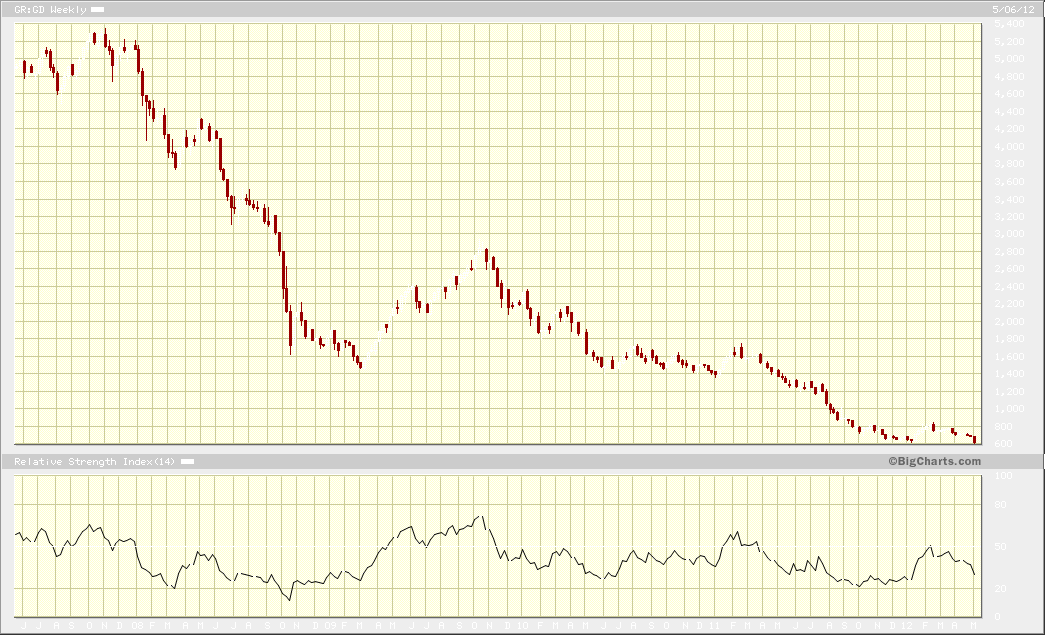The Market s Four Sister Indices Show A Changing Of The Guard Is Underway
Post on: 23 Июнь, 2015 No Comment

Stay Connected
In completing my firms 2012 year-end report. we quoted Bob Dylan’s Blowin’ In the Wind when delivering a missive regarding the underlying market driver. To keep that impetus, we now quote his Changing of the Guards:
Gentlemen… Ive shined your shoes
Ive moved your mountains and marked your cards
But Eden is burning, either brace yourself for elimination
Or else your hearts must have the courage for the changing of the guards.
Every investor — whether a technician, a fundamentalist, or a fusion analyst — realizes market direction dictates and accounts for 70%+ of an individual portfolios performance. The remainder can be equated to one’s individual selection of allocation — whether it be equities, ETFs, or sector rotation. Since the post-Thanksgiving 2012 holiday, there has been quite a momentum shift in the general equity markets, excluding the
4% mid-December 2012 fiscal cliff non-completion fright. Yet not all of the four sister indices have provided the same exuberance, and a massive bifurcation has begun concerning return and technical strength. So what’s the cause, and what might investors want to do about it?
In looking back to the last top in October 2007 just over fiver years ago, it’s easy to ascertain which market has outperformed the rest — the Nasdaq 100 Index (INDEXNASDAQ:NDX). In order of return, it’s the NDX, the Russell 2000 Index (INDEXRUSSELL:RUT), the Dow Jones Industrial Average (INDEXDJX:.DJI ), and bringing up the rear, the S&P 500 Index (INDEXSP:.INX). We’ve all heard the old adage and popular disclaimer of the business: Past performance is not indicative of future results. This could not hold truer today. The following 5-year chart shows the PowerShares Nasdaq 100 Index ETF (NASDAQ:QQQ ) up over 25%, the iShares Russell 2000 Index ETF (NYSEARCA:IWM ) up over 7%, with the last two, the elders, still under water.
Click to enlarge
Just after the Thanksgiving break, coming out of the 8-10% correction (depending on which of the four sisters), my firm’s technical algorithms indicated a shift in stance and delivered us a report showing the Russell 2000 having the greatest technical strength and longevity of return potential moving forward. In a January 14 article titled The New Year Brings Strength to Markets, but Is It Real and Can It Last? we began to share some of our opinions on this discovery as we discussed the relationship of an increasing interest-rate environment and mid- and small-cap stocks. Today we continue our analysis and deliver additional basis behind our opinion: We look at relative strength.
In evaluating technical strength, one has to ascertain time frames in which to analyze. My firm uses market correction bottoms to measure relative strength comparisons. Without going into a complete dissertation on why, suffice it to say that when coming off bottoms, consider this boxing analogy: Its easier to establish a boxer’s strength once he hits the mat than attempt to determine it mid-round. That said, we chose the mid 2012 correction bottom and the November 2012 bottom to gain relevance and comparative stance.
Click to enlarge
When first evaluating the comparative relative strength of the four sisters, the bottom to top (6/2012 – 9/2012) and the bottom to bottom (6/2012 – 11/2012) showed nearly 1r (r = correlation), give or take, using a typical standard deviation (
2%). Relatively speaking (forgive the pun), it really didn’t matter how a portfolio was diversified, assuming an all equity portfolio, throughout this period. They all performed about the same. It wasn’t until after Thanksgiving when the divergence truly appeared.
Click to enlarge
As we further evaluate, we can begin to visualize the changing of the guards. It started with the bottom to top (11/2012 – 12/2012) comparison beginning to show the outperformance of the Russell 2000 (IWM). In continuing the relative analysis, a good technician will also incorporate the following drawdown in order to determine if the up return is nothing more than a higher standard deviation of the outperformer, simply meaning greater volatility, not greater strength. When looking at the mid-December correction, strength appeared once again in the form of less drawdown. Hence, when all markets simultaneously took off — December 31 — the IWM shot past all the others as if they were standing still.
The Russell 2000 Index, since Thanksgiving, has outperformed the Nasdaq 100 Index more than 2 to 1 while outperforming the two elders by a margin of 40%.
While it should never be used independently of other forms, this type of analysis is a great way to either confirm or simply add to one’s weight of evidence when ascertaining investment choices.
I hope this helps and finds you well.
Twitter: @TAM_News














